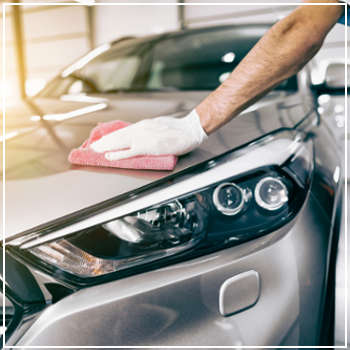Waxing is one of the most effective ways to preserve your car's exterior shine and protect its paint from environmental damage. A good layer of wax acts as a shield against harmful substances like UV rays, tree sap, bird droppings, and road grime, helping prevent rust and fading over time. It also helps rainwater bead up and roll off the surface, keeping your car looking clean and fresh. Without regular waxing, the paint can gradually lose its luster, becoming dull and lifeless. To maintain that showroom shine, it’s recommended to wax your car every three months on average. However, if you live in an area with extreme weather conditions—whether very cold or very hot—the frequency may need to increase. Factors like salted roads in winter, high pollution levels, or parking under trees can accelerate wear and tear. In such cases, you might benefit from more than four wax applications per year. Additionally, check your car’s surface every 45 days to see if the wax is still holding up. Natural carnauba waxes tend to last shorter than synthetic ones, which can offer longer-lasting protection—some even lasting up to a full year. During a professional waxing session, your vehicle will be thoroughly cleaned, including wheels, door jambs, and window seals. Once all dirt is removed and the paint is polished, a high-quality wax and sealant are applied to ensure maximum protection and a glossy finish. Professional waxing offers a level of quality and thoroughness that DIY methods simply can’t match. If you notice any of these signs, it’s time to bring your car in for expert care: This test is quick and simple: spray water on your car’s surface. If the wax is still effective, the water should form distinct beads that roll off. If the water spreads out in sheets or streaks, the wax has worn away and needs to be reapplied. If the paint feels dry or shows cracks, it’s a sign that the wax and clear coat have failed to protect the surface. This can happen due to prolonged exposure to sunlight, leading to moisture loss and a damaged finish. A common method to check wax condition is to use a folded towel and press it against the car’s surface while moving it in circular motions. If you hear a squeak, it means the wax has thinned out and isn’t providing enough protection. A smooth glide without noise is ideal. Minor scratches can often be masked by wax, making them less noticeable. But if they start to stand out more, it’s a sign that the wax is wearing off and needs attention. Either spot-touching or a full reapplication may be necessary. For top-tier protection and a flawless finish, trust the experts at DaSilva’s Auto Body. Whether you need a simple wax or a full exterior detailing service, our team is here to keep your car looking its best. Contact us today at our Naugatuck location to schedule your appointment and let your car shine! Double Head Pipe Chamfering Machine Double Head Pipe Chamfering Machine,Chamfering Machine,Double Chamfering Machine,Double Head Chamfering Machine Zhangjiagang heshun machinery manufacturer co.,ltd. , https://www.hsformer.com While doing a DIY paint touch-up or applying wax yourself might seem easy and cost-effective, the outcome often falls short of professional results. When it comes to paint, improper techniques can lead to adhesion problems or an uneven, gritty finish. Professional detailing services, such as waxing, not only enhance your car’s appearance but also provide long-term protection against weather, dirt, and other damaging elements.
While doing a DIY paint touch-up or applying wax yourself might seem easy and cost-effective, the outcome often falls short of professional results. When it comes to paint, improper techniques can lead to adhesion problems or an uneven, gritty finish. Professional detailing services, such as waxing, not only enhance your car’s appearance but also provide long-term protection against weather, dirt, and other damaging elements.Why Wax Your Car and How Often?
When to Get Your Car Professionally Waxed
Your Car No Longer Passes the Bead Test
You Spot Dry Paint
You Hear a Squeaking Sound
You Spot Scratches